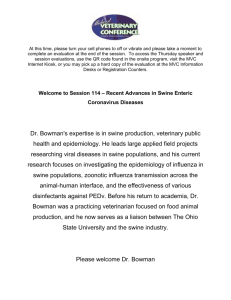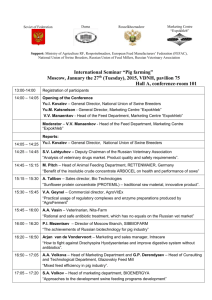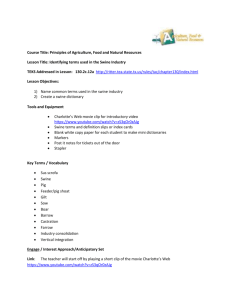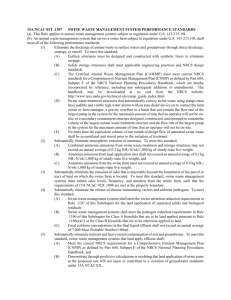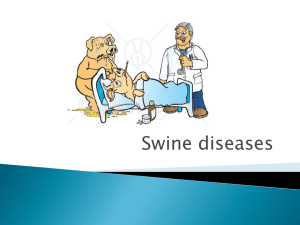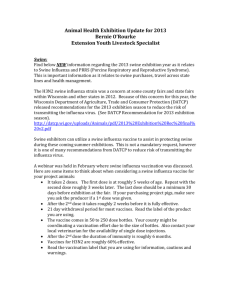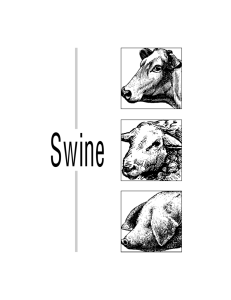4.13 to 4.17 Lesson Plans
advertisement
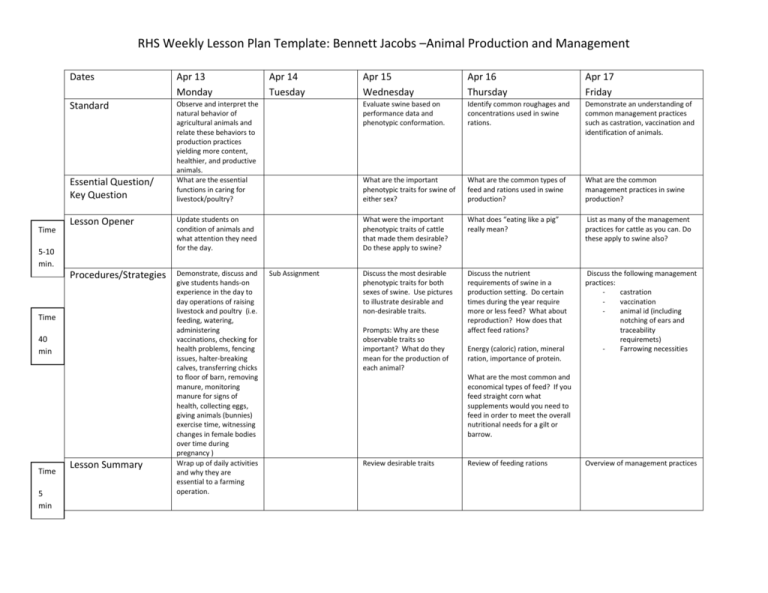
RHS Weekly Lesson Plan Template: Bennett Jacobs –Animal Production and Management Dates Apr 13 Monday Standard Apr 15 Wednesday Apr 16 Thursday Apr 17 Friday Observe and interpret the natural behavior of agricultural animals and relate these behaviors to production practices yielding more content, healthier, and productive animals. What are the essential functions in caring for livestock/poultry? Evaluate swine based on performance data and phenotypic conformation. Identify common roughages and concentrations used in swine rations. Demonstrate an understanding of common management practices such as castration, vaccination and identification of animals. What are the important phenotypic traits for swine of either sex? What are the common types of feed and rations used in swine production? What are the common management practices in swine production? Lesson Opener Update students on condition of animals and what attention they need for the day. What were the important phenotypic traits of cattle that made them desirable? Do these apply to swine? What does “eating like a pig” really mean? List as many of the management practices for cattle as you can. Do these apply to swine also? Procedures/Strategies Demonstrate, discuss and give students hands-on experience in the day to day operations of raising livestock and poultry (i.e. feeding, watering, administering vaccinations, checking for health problems, fencing issues, halter-breaking calves, transferring chicks to floor of barn, removing manure, monitoring manure for signs of health, collecting eggs, giving animals (bunnies) exercise time, witnessing changes in female bodies over time during pregnancy ) Wrap up of daily activities and why they are essential to a farming operation. Discuss the most desirable phenotypic traits for both sexes of swine. Use pictures to illustrate desirable and non-desirable traits. Discuss the nutrient requirements of swine in a production setting. Do certain times during the year require more or less feed? What about reproduction? How does that affect feed rations? Discuss the following management practices: castration vaccination animal id (including notching of ears and traceability requiremets) Farrowing necessities Essential Question/ Key Question Time 5-10 min. Time 40 min Time 5 min Lesson Summary Apr 14 Tuesday Sub Assignment Prompts: Why are these observable traits so important? What do they mean for the production of each animal? Energy (caloric) ration, mineral ration, importance of protein. What are the most common and economical types of feed? If you feed straight corn what supplements would you need to feed in order to meet the overall nutritional needs for a gilt or barrow. Review desirable traits Review of feeding rations Overview of management practices RHS Weekly Lesson Plan Template: Bennett Jacobs –Animal Production and Management Time Assessment/ Evaluation Materials Needed Teacher evaluation during activities (participation in activities or discussion of) iPad, boots Teacher evaluation during discussion. Assessment of prompts given in class Socrative assessment iPad iPad iPad


